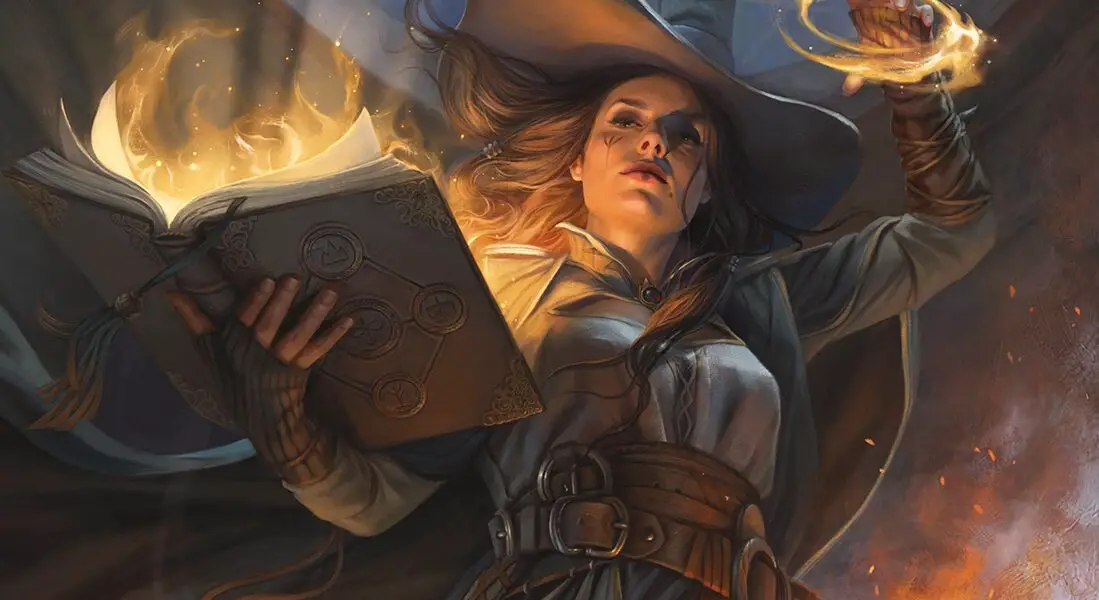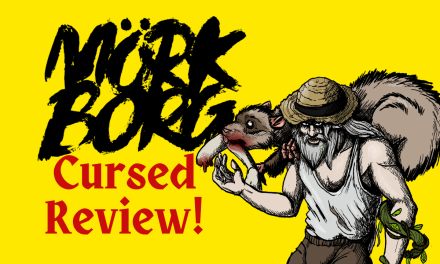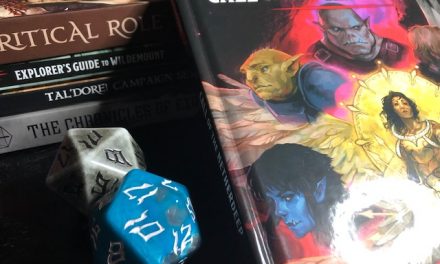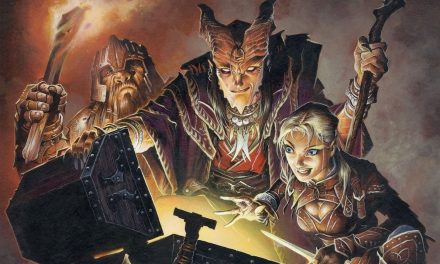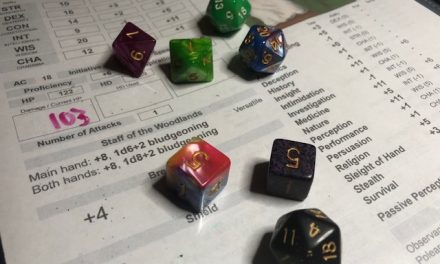Looking to add some new flair to your Dungeons & Dragons campaigns?
We checked out “Tasha’s Cauldron of Everything” and found it packed with exciting new options for both Dungeon Masters and players. The book is filled with fresh subclasses, spells, and rules that can really enhance gameplay.
There are many things to love about this book and the new options that it brings to your table.
So let’s dive in, shall we?
The Bottom Line – Tasha’s Cauldron of Everything
“Tasha’s Cauldron of Everything” is a must-have for any D&D player or DM looking to spice up their game.
Tons of new character options await with 30 subclasses, a new class (the Artificer), new optional rules for building your dream character, and a cauldron overflowing with new spells and magical items.
Dungeon Masters will also find plenty of new tools for incorporating group patrons, designing puzzles, and world-building to help bring the game world to life.
Ready to level up your games? Pick up your copy of Tasha’s Cauldron of Everything now!
This essential guide offers new subclasses, spells, magic items, and innovative rules for character customization and game mastery. Elevate your adventures and inspire creativity with this must-have addition to your collection. Get your copy now!
Overview of Tasha’s Cauldron of Everything D&D 5e
We’ve spent some time with the physical version of Tasha’s Cauldron of Everything, and it offers a lot to both Dungeon Masters and players. The book provides many new rules and ideas, making it a worthwhile addition to any D&D collection.
We really appreciated the expanded subclasses and character options. There’s something fresh for every class, including the unique Artificer class which makes its “official” (i.e., non-setting-specific) debut here. The new spells, class features, artifacts, and magical tattoos add a fun twist to campaigns.
While a few sections of the book work more for inspiring creativity rather than providing a clear-cut resource (i.e., the sections about parleying with monsters and building puzzles), it’s still handy for kickstarting your own ideas.
That said, the game mechanics and content are top-notch.
Ideal for experienced players and newcomers alike, Tasha’s Cauldron of Everything enriches the D&D experience with its depth and variety. Overall, it’s a solid rule expansion that we find ourselves reaching for often.
New Class: The Artificer
With gadgets and gizmos galore, the Artificer class joins the roster of classes available to players.
It also comes with four fun and engaging subclass options: the potion-mixing Alchemist, the explosive Artillerist, the resourceful Battlesmith, and the Iron-Man-inspired Armorer.
Artificers bring a unique application of magic into the game. Focusing on practical applications, they can infuse items with a number of magical properties and bring a ton of problem-solving utility to the game.
If you’ve ever wanted to play as more of a “tinkerer” type of character, this is the class for you!
Expanded Subclasses
We’ve found the expanded subclasses in this book to be a real treat for both new and veteran players.
There are 26 subclasses for existing character classes in addition to the Artificer and its four subclasses!
The variety is impressive, ranging from the Swarmkeeper for Rangers to the Aberrant Mind for Sorcerers. These options breathe fresh life into character creation.
For the most part, these new subclasses are well-balanced and bring a lot of new flavor to the game. However, there is the downside that some newer players might find a few options to be a bit more complex.
But overall, they add a ton of depth and replayability and are my personal favorite part of this book. If you enjoy having even more options available for characters, this will certainly be a highlight.
Related: Top 10 Subclasses in Tasha’s Cauldron of Everything
Customizable Character Options
We had a blast exploring the customizable character options in Tasha’s Cauldron of Everything. The book allows us to tailor our characters to fit our vision perfectly. There are many new choices for subclasses, spells, and feats, making it easier than ever to create unique heroes.
One of the standout features is the ability to change racial traits. This flexibility lets us craft characters that feel more personal and different from the typical templates.
With this rule, ability score increases from your character’s race can be assigned to a different ability. For example, a Half-Orc that would normally get +2 to Strength and +1 Constitution may instead choose to apply those bonuses to Dexterity and Charisma.
Additionally, there are options regarding your character’s languages, lineage, and proficiencies.
The Feats section of Tasha’s Cauldron of Everything is small, but contains some very flavorful feat options for characters. While I initially chuckled at the “Chef” feat, it actually can make for an interesting way to give buffs to your party when playing a character with interest in the culinary arts.
Optional features for classes have also done a lot to fix some balancing issues, particularly Rangers, who now have new ways to be more consistently impactful in the game.
On the downside, some options might overwhelm beginners. There’s so much to choose from that new players might find it difficult to decide.
Overall, these customizable options make the game more engaging and dynamic for seasoned players who want to try something new.
New Spells and Magic Items
This now brings us to the new spells and magical items included in Tasha’s Cauldron of Everything.
The additions offer exciting options for players, enhancing our games with inventive spells and intriguing artifacts, including a personal favorite: magical tattoos.
The spell list is vast, presenting fresh enchantments that can change the tide of battle or offer unique solutions to challenges. Some spells are fun and quirky, while others add significant strategic depth.
On the downside, the sheer number of new options might overwhelm newer players. Yet, seasoned players will likely appreciate the variety and potential these spells bring to campaigns.
The magic items, like tattoos and artifacts, provide new ways to equip characters, expanding customization and interactions. They’re beautifully crafted and versatile, fitting seamlessly into any campaign.
While some items may seem a bit overpowered, they introduce creative avenues for gameplay.
Enhanced Gameplay and Puzzles
The new mechanics and options really spice up the gameplay. My group had more fun figuring out the different puzzles due to the fresh and challenging elements introduced.
While, as I mentioned, these sections work more as a springboard for your own creativity, they give you a handy reference for incorporating these kinds of encounters in your sessions. It’s clear that a lot of thought went into making the game more dynamic.
For example, including Sidekicks and Group Patrons adds depth to character development and helps create new story arcs and immersion. These features keep everyone engaged and invested in the story.
However, as with the other aspects of TCoE mentioned in this review, the complexity might be a bit overwhelming for new players. It’s a good idea to have at least one experienced player to guide the group through the more intricate parts.
But with that said, the enhanced gameplay and unique puzzles make for a richer and more enjoyable D&D experience. As a DM, you’re given frameworks and options to use based on what kind of experience your players are looking for in your game world.
Pros and Cons of Tasha’s Cauldron of Everything
Pros
There are A LOT of positives about this book.
- The new content that TCoE introduces is really valuable. It brings fresh ideas and new options for gameplay into the mix.
- Meanwhile, the book itself is well-organized and easy to understand with fun notes, comments, and sidebars throughout. Both new and seasoned players will find these rules and tips helpful.
- Tasha’s little notes throughout the book do a lot to give it some extra personality and give those who aren’t familiar with her character some insights into her personality.
- And, lest we forget, the artwork throughout this book is remarkably vibrant and adds a lot to the experience. It’s, without a doubt, some of the best art that D&D 5e has ever put out!
- Last but not least, the DM Tools are particularly useful for Dungeon Masters who enjoy world-building. It feels like they’ve put a lot of thought into making the book user-friendly.
Cons
Of course, there will always be at least a few points of criticism worth pointing out. These are admittedly small drawbacks but they are still worth noting.
- Some subclasses (like the Twilight Cleric) seem a bit too powerful, which might make games feel unbalanced.
- Another issue is that some people might find it repetitive if they already own many other D&D books. For example, the Spores Druid, Bladesinger Wizard, and Eloquence Bard have all previously been published. However, it is incredibly convenient to have them all together in one book alongside the new subclasses.
- At 192 pages, the book may seem short if you’re paying the full retail price, though it’s very commonly on sale for less than the full MSRP.
This essential guide offers new subclasses, spells, magic items, and innovative rules for character customization and game mastery. Elevate your adventures and inspire creativity with this must-have addition to your collection. Get your copy now!
Conclusion – Tasha’s Cauldron of Everything 5e Review
Ever since its release, we’ve enjoyed our time with Tasha’s Cauldron of Everything. The new content is solid and adds a lot to our D&D sessions.
While some subclasses might feel overpowered, most of the additions are well-balanced. The book also provides useful rules and mechanics, making it a valuable resource for both players and DMs. The quality of the physical book is excellent, with nice graphics and easy-to-read information.
Rest assured, Tasha’s Cauldron is a worthy addition to your D&D collection!

